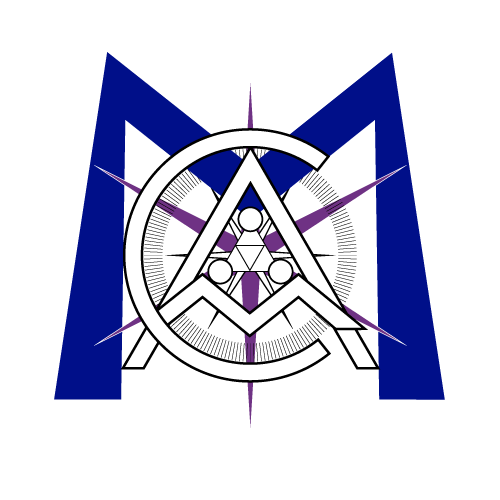Patents Pending
Date: Mon, 2002-06-10
U.S. News & World Report Megan Barnett June 10, 2002 The wording of the U.S. Court of Appeals decision on Eli Lilly’s patent on Prozac was unmistakably harsh: “invalid.” Wall Street’s translation was even harsher. Immediately following the ruling, on Aug. 9, 2000, shareholders dumped $36 billion in Lilly stock, roughly a third of the pharmaceutical giant’s market capitalization. And nine months later, when the court reaffirmed that the patent was invalid, Lilly’ s stock price plunged again. Lilly, in a challenge from a competitor, had lost the exclusive right to make and sell Prozac. That’s how much it hurts to lose a prized patent. But a patent is only as good as the judgment of one or two overworked, highly specialized bureaucrats–the examiners in the U.S. Patent and Trademark Office who award it. And a close look at the patenting process by U.S. News finds it riddled with problems, not the least of which is patents- -like Lilly’s for Prozac–that were issued in error. The fault lies partly with Congress, which refuses to give the office all the fees it collects, leaving it years behind in its computerization efforts and awash in paper. Meanwhile, with America’s economic dominance hinging more and more on technology, individuals and companies find themselves waiting two years or more for the final word on their patent applications. “I have some phenomenal concerns,” says James Rogan, the recently appointed head of the patent office, after studying its problems. If patent wait-time and quality are not addressed shortly and effectively, he says, the USPTO “is going to quickly move to a near-crisis mode.” Intangible assets like patents, trademarks, copyrights, and trade secrets are a rapidly growing piece of the U.S. economy. Since companies collect fees from those who want to use their patented products, the economic rewards from patenting are enormous. IBM, for instance, was awarded 3,411 patents and collected $1.5 billion in licensing royalties in 2001 alone. Nationwide, an estimated $120 billion is generated each year from patent licenses, up from $15 billion in 1990. With so much at stake, patent disputes increasingly are ending up in court at the expense of the patent holders. According to a University of Texas study, nearly half of those court-examined patents are ruled invalid. Struggling. To be sure, the patent office’s slippage did not occur overnight. Since George Washington signed the Patent Act of 1790, the office has struggled to keep up with the ever increasing speed of invention. Now part of the Department of Commerce, the USPTO is a $1.4 billion agency employing a staff of more than 6,000. In 1991, the office was overhauled, and a fee system was established to allow the agency to be self-supporting. But the very next year, Congress took one look at the juicy fees and withheld $8 million, putting it to other purposes. The diversion continued unabated, totaling $700 million in a decade. “People have all agreed to pay these fees,” says James Singer, a senior associate and patent specialist at Philadelphia- based law firm Pepper Hamilton. “It’s crazy to siphon off that money for snail darters.” The diversion of patent fees has made it hard for the office to recruit and retain qualified examiners, whose salary scale starts at $32,000. Indeed, during the economic boom of the late ’90s, the agency lost hundreds of examiners to the more lucrative private sector. In the year 2000 alone, 437 examiners left their jobs, while just 375 were hired. Yet between 1996 and 2000, patent applications grew over 50 percent. And the office was caught flat-footed when a federal court in 1998 upheld a patent for a computerized method of calculating share prices for mutual funds. Following the ruling, the patent office was flooded by applications for business methods, such as Amazon’s controversial “one click” checkout system for online ordering. Short on M.B.A.’s, the office was forced to hire more business-qualified examiners. In an effort to attract them, the agency hiked salaries, instituted flexible work hours, and added graduate-school benefits. But it is still desperate to catch up. “Despite the wonderful efforts of the examiners, the office has seen extreme growth in the number and complexity of patents,” says Will Wilkinson, an inventor who owns more than 200 patents. “The patent office needs all the help it can get.” On paper, it appears that the Bush administration agrees. But upon closer examination the numbers tell a different story. The 2003 budget proposal gives the USPTO a 21.2 percent budget increase of $237 million. But most of that money will come from inventors, who will be hit with a one-time 19.3 percent surcharge on all fees for the year. And from the $207 million raised by the fee increase, Congress intends to divert funds again–this time $162 million, to vaguely specified homeland security efforts. Paperless. The siphoning of revenue has put the office way behind in its efforts to modernize its research methods and data systems. Twenty years ago, officials predicted a paperless patent office by 1990. Yet today, an application that arrives electronically is promptly printed out on paper and physically attached to a file. The agency’ s Arlington, Va., offices house row after row of floor-to-ceiling shelves jammed with bright yellow “file wrappers,” applications that collect dust as they await their turn to be sent to an examiner’s in box. Approximately 350,000 cases are currently on backlog, and the agency expects to receive as many new applications this year. It’s hard to imagine that the backlog could be trimmed if examiners are to meet USPTO Director Rogan’s other imperative, which is to reduce patent-award errors. Before granting a patent, examiners are expected to assiduously search for any evidence that proves the invention is not new or is based on an existing design. That evidence, called prior art, would include everything from earlier patents to published material from anywhere in the world that describes the same invention. The enormity of the search is mind-boggling. In a perfect world, an examiner would scour everything worldwide, from graduate dissertations to marketing brochures for small businesses. While examiners have access to dozens of databases and print publications, their resources are far from adequate. To complicate matters, patent examiners work on quotas based on speed, not quality. When one of the applications on backlog finally reaches an examiner’s desk, the examiner has, on average, 20 hours to work on it. “We know we’re taking shortcuts,” says Ron Stern, president of the Patent Office Professional Association, the union for patent examiners. “The less work you do, the more credit you get. If you find nothing [in prior art], you’re considered the most efficient of all.” Efficiency, however, can easily cross into absurdity. Take Patent No. 6,368,227, awarded to 7-year-old Steven Olson of St. Paul, Minn., on April 9. The boy’s invention, which the patent office deemed new and unique, is a method for swinging sideways on a swing suspended by two chains from a horizontal tree branch. Or Patent No. 6,360,693, awarded on March 26. The patent’s claims describe an animal toy that sounds suspiciously like a stick (the apparatus “includes a main section with at least one protrusion . . . that resembles a branch in appearance” ). “It’s an embarrassment,” says one longtime patent attorney. “Sometimes examiners get so myopic on the rules of the game they don’t step back and use their common sense.” The swing patent is being re-examined by order of Rogan. Adding to the difficulties is the arcane and often creative language used in applications. Once patents have been awarded, they’re filed electronically, giving examiners the ability to search the archives by a word or phrase. But when applicants use different adjectives to describe their invention, the examiner can easily miss previous inventions that might prevent a patent from being awarded. David Martin, founder of a data management firm called M-CAM, calls them “thesaurus patents” and says he is stunned by the number of them he finds for his clients. “About one third of the time we find patents that are functionally redundant,” he says. Other experts think Martin’s estimates are overstated, but since any piece of prior art missed by the examiner can be used in court by a company to invalidate a competitor’s patent, the stakes are high. Patent lawsuits typically cost each party $1 million, and suits costing $4 million to $10 million are not unheard of. Rogan acknowledges that too many questionable patents slip through the system. Fixing the problems, he told U.S. News, is going to take real work. This week he is expected to announce proposals for reform, and he will soon hand Congress a detailed, five-year business plan for the agency. Rogan concedes that it is inexcusable to expect anyone to wait two years for patent approval but says that improving quality comes before reducing wait times. The agency plans to hire 950 new examiners in 2003. But because it takes about seven years before a new examiner is allowed to sign off on patents unsupervised, the wait time will undoubtedly lengthen even further in the near term. Rogan faces other challenges too: The examiners are members of a union, so each proposed change will get union scrutiny. In spite of this, Rogan says he is willing to push for controversial legislative reform if necessary to overhaul the patent system. “I’m not afraid to make people angry,” he says.


Sorry, the comment form is closed at this time.